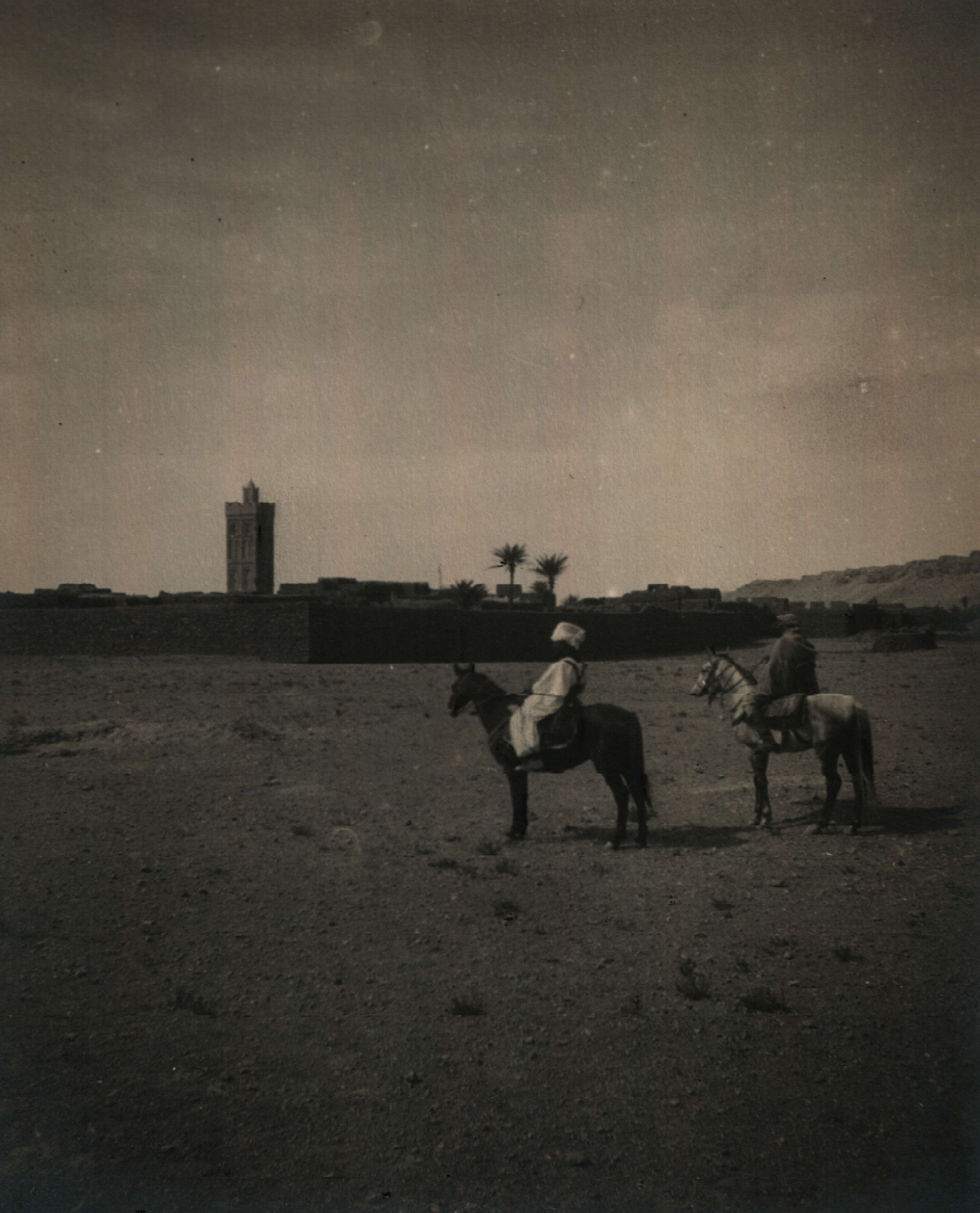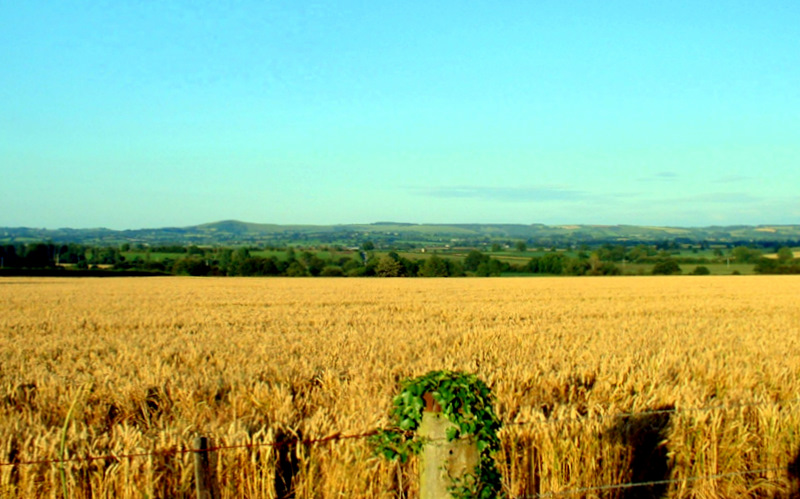|
Kénadsa
Kénadsa is a town and Communes of Algeria, commune in the Sahara Desert of south-western Algeria, and is the capital of Kénadsa District, Béchar Province. As of 2008, Kénadsa had a population of 13,492, up from 11,667 in 1998, and an annual growth rate of 1.5%. The commune covers an area of . There is a large Kenadsa longwave transmitter, longwave broadcasting station near Kénadsa. Geography Kénadsa lies at an elevation of on the flat rocky hamada west of Béchar. The wadi Oued Meswar is located about west of the town, and meets the Oued Guir near Abadla at the locality of Ksi Ksou. Climate Kénadsa has a hot desert climate (Köppen-Geiger climate classification system, Köppen: BWh), with extremely hot summers and mild winters, and very little precipitation throughout the year. Economy Agriculture is an important industry in Kénadsa. The commune has a total of of arable land, but only is irrigated. There are a total of 67,000 date palms planted in the commune. ... [...More Info...] [...Related Items...] OR: [Wikipedia] [Google] [Baidu] |
Kénadsa District
Kénadsa is a district in Béchar Province, Algeria. It was named after its capital, Kénadsa. According to the 2008 census, the total population of the district was 14,084 inhabitants. The district covers the area directly west of the province's capital, Béchar; the Oued Guir flows from north to south through the district, and is dammed at the Djorf Torba dam. Municipalities The district is further divided into 2 communes: *Kénadsa Kénadsa is a town and Communes of Algeria, commune in the Sahara Desert of south-western Algeria, and is the capital of Kénadsa District, Béchar Province. As of 2008, Kénadsa had a population of 13,492, up from 11,667 in 1998, and an annual gr ... * Méridja References Districts of Béchar Province {{Béchar-geo-stub ... [...More Info...] [...Related Items...] OR: [Wikipedia] [Google] [Baidu] |
Béchar Province
Béchar () is a Provinces of Algeria, province ''(Wilayah, wilaya)'' in Algeria, located on the border with Morocco in the Algerian Desert, Algerian Sahara. It is the second least-densely populated province in Algeria, with a population of 353591 inhabitants in 2019, with a density of 2,19/square kilometers. Its capital and biggest city is Béchar. History The greater part of the province is dry plains (hamadas) suitable for grazing but with insufficient surface water to support agriculture. Most settlements are therefore concentrated in oases along the Saoura valley and its tributaries. Natural resources include coal deposits in the north around Bechar and Kénadsa, Kenadsa. The oases' traditional economic basis was agriculture, notably growing date palms and grain. The inhabitants of several oases, notably Ouakda, Lahmar and Boukais, speak South Oran Berber, Berber languages, while the rest speak Arabic and Korandje. Many of the oases had significant populations of or haratin ... [...More Info...] [...Related Items...] OR: [Wikipedia] [Google] [Baidu] |
Béchar
Béchar () is the capital city of Béchar Province, Algeria. It is also a commune, coextensive with Béchar District, of Béchar Province. In 2008 the city had a population of 165,627, up from 134,954 in 1998, with an annual growth rate of 2.1%. The commune covers an area of . Béchar thrived on the activity of the coal mines until petroleum production seized the market. Leatherwork and jewellery are notable products of Béchar. Dates, vegetables, figs, cereals and almonds are produced near Béchar. There are bituminous coal reserves near Béchar, but they are not exploited to their greatest potential because of transportation costs are too high relative to that from the oil and gas fields of eastern Algeria. The city was once the site of a French Foreign Legion post. The Kenadsa longwave transmitter, whose masts are the tallest structures in Algeria at , is found near Béchar. Geography Béchar is located in the northwestern region of Algeria roughly south of the Morocc ... [...More Info...] [...Related Items...] OR: [Wikipedia] [Google] [Baidu] |
Communes Of Algeria
The communes of Algeria (Arabic: بلدية (singular)), also known as municipalities, form the third level of administrative subdivisions of Algeria. As of 2002, there were 1,541 municipalities in the country. The municipalites are also known as communes (baladiyahs). List This list is a copy from the Statoids page named Municipalities of Algeria'. The population data is from June 25, 1998. See also * List of cities in Algeria * Cities of present-day nations and states References {{DEFAULTSORT:Communes Of Algeria Subdivisions of Algeria Algeria 3 Communes, Algeria Algeria geography-related lists ... [...More Info...] [...Related Items...] OR: [Wikipedia] [Google] [Baidu] |
Goat
The goat or domestic goat (''Capra hircus'') is a species of Caprinae, goat-antelope that is mostly kept as livestock. It was domesticated from the wild goat (''C. aegagrus'') of Southwest Asia and Eastern Europe. The goat is a member of the family Bovidae, meaning it is closely related to the sheep. It was one of the first animals to be domesticated, in Iran around 10,000 years ago. Goats have been used for milk, Goat meat, meat, Animal fur, wool, and Animal skin, skins across much of the world. Milk from goats is often turned into goat cheese, cheese. In 2022, there were more than 1.1 billion goats living in the world, of which 150 million were in India. Goats feature in mythology, folklore, and religion in many parts of the world, including in the classical myth of Amalthea (mythology), Amalthea, in Tanngrisnir and Tanngnjóstr, the goats that pulled the chariot of the Norse god Thor, in the Scandinavian Yule goat, and in Hinduism's goat-headed Daksha. In Christianity and ... [...More Info...] [...Related Items...] OR: [Wikipedia] [Google] [Baidu] |
Arable Land
Arable land (from the , "able to be ploughed") is any land capable of being ploughed and used to grow crops.''Oxford English Dictionary'', "arable, ''adj''. and ''n.''" Oxford University Press (Oxford), 2013. Alternatively, for the purposes of agricultural statistics, the term often has a more precise definition: A more concise definition appearing in the Eurostat glossary similarly refers to actual rather than potential uses: "land worked (ploughed or tilled) regularly, generally under a system of crop rotation". In Britain, arable land has traditionally been contrasted with pasturable land such as heaths, which could be used for sheep-rearing but not as farmland. Arable land is vulnerable to land degradation and some types of un-arable land can be enriched to create useful land. Climate change and biodiversity loss are driving pressure on arable land. By country According to the Food and Agriculture Organization of the United Nations, in 2013, the world's arable land amo ... [...More Info...] [...Related Items...] OR: [Wikipedia] [Google] [Baidu] |
Irrigated
Irrigation (also referred to as watering of plants) is the practice of applying controlled amounts of water to land to help grow crops, landscape plants, and lawns. Irrigation has been a key aspect of agriculture for over 5,000 years and has been developed by many cultures around the world. Irrigation helps to grow crops, maintain landscapes, and revegetate disturbed soils in dry areas and during times of below-average rainfall. In addition to these uses, irrigation is also employed to protect crops from frost, suppress weed growth in grain fields, and prevent soil consolidation. It is also used to cool livestock, reduce dust, dispose of sewage, and support mining operations. Drainage, which involves the removal of surface and sub-surface water from a given location, is often studied in conjunction with irrigation. There are several methods of irrigation that differ in how water is supplied to plants. Surface irrigation, also known as gravity irrigation, is the oldest form of i ... [...More Info...] [...Related Items...] OR: [Wikipedia] [Google] [Baidu] |
Date Palms
''Phoenix dactylifera'', commonly known as the date palm, is a flowering-plant species in the palm family Arecaceae, cultivated for its edible sweet fruit called dates. The species is widely cultivated across northern Africa, the Middle East, the Horn of Africa, Australia, South Asia, and the desert regions of Southern California in the United States. It is naturalized in many tropical and subtropical regions worldwide. ''P. dactylifera'' is the type species of genus '' Phoenix'', which contains 12–19 species of wild date palms. Date palms reach up to 60–110 feet in height, growing singly or forming a clump with several stems from a single root system. Slow-growing, they can reach over 100years of age when maintained properly. Date fruits (dates) are oval-cylindrical, long, and about in diameter, with colour ranging from dark brown to bright red or yellow, depending on variety. Containing 61–68percent sugar by mass when dried, dates are consumed as sweet snacks ... [...More Info...] [...Related Items...] OR: [Wikipedia] [Google] [Baidu] |
Sheep
Sheep (: sheep) or domestic sheep (''Ovis aries'') are a domesticated, ruminant mammal typically kept as livestock. Although the term ''sheep'' can apply to other species in the genus '' Ovis'', in everyday usage it almost always refers to domesticated sheep. Like all ruminants, sheep are members of the order Artiodactyla, the even-toed ungulates. Numbering a little over one billion, domestic sheep are also the most numerous species of sheep. An adult female is referred to as a ''ewe'' ( ), an intact male as a ''ram'', occasionally a ''tup'', a castrated male as a ''wether'', and a young sheep as a ''lamb''. Sheep are most likely descended from the wild mouflon of Europe and Asia, with Iran being a geographic envelope of the domestication center. One of the earliest animals to be domesticated for agricultural purposes, sheep are raised for fleeces, meat ( lamb, hogget or mutton), and milk. A sheep's wool is the most widely used animal fiber, and is usually harvested by ... [...More Info...] [...Related Items...] OR: [Wikipedia] [Google] [Baidu] |
Cattle
Cattle (''Bos taurus'') are large, domesticated, bovid ungulates widely kept as livestock. They are prominent modern members of the subfamily Bovinae and the most widespread species of the genus '' Bos''. Mature female cattle are called cows and mature male cattle are bulls. Young female cattle are called heifers, young male cattle are oxen or bullocks, and castrated male cattle are known as steers. Cattle are commonly raised for meat, for dairy products, and for leather. As draft animals, they pull carts and farm implements. Cattle are considered sacred animals within Hinduism, and it is illegal to kill them in some Indian states. Small breeds such as the miniature Zebu are kept as pets. Taurine cattle are widely distributed across Europe and temperate areas of Asia, the Americas, and Australia. Zebus are found mainly in India and tropical areas of Asia, America, and Australia. Sanga cattle are found primarily in sub-Saharan Africa. These types, sometime ... [...More Info...] [...Related Items...] OR: [Wikipedia] [Google] [Baidu] |
Camel
A camel (from and () from Ancient Semitic: ''gāmāl'') is an even-toed ungulate in the genus ''Camelus'' that bears distinctive fatty deposits known as "humps" on its back. Camels have long been domesticated and, as livestock, they provide food ( camel milk and meat) and textiles (fiber and felt from camel hair). Camels are working animals especially suited to their desert habitat and are a vital means of transport for passengers and cargo. There are three surviving species of camel. The one-humped dromedary makes up 94% of the world's camel population, and the two-humped Bactrian camel makes up 6%. The wild Bactrian camel is a distinct species that is not ancestral to the domestic Bactrian camel, and is now critically endangered, with fewer than 1,000 individuals. The word ''camel'' is also used informally in a wider sense, where the more correct term is "camelid", to include all seven species of the family Camelidae: the true camels (the above three species), along ... [...More Info...] [...Related Items...] OR: [Wikipedia] [Google] [Baidu] |








